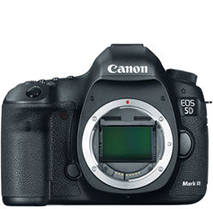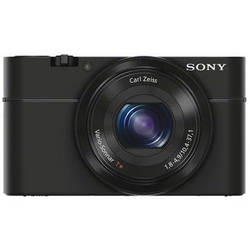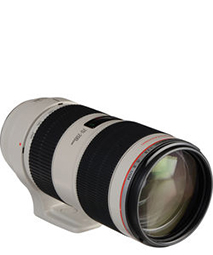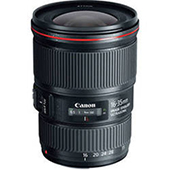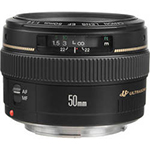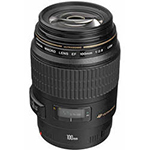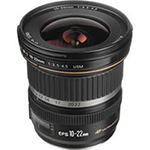Gear List
I’m always a little hesitant to post gear lists. While I think they’re an invaluable tool for aspiring photographers and I, like so many others, am fascinated with the tools in another photographer’s bag, gear lists can, in many ways, be self-limiting. Tools are simply that – tools. Photography is an art like anything else and each of us uses our tools in different ways. We also each tend to see the world in unique and different ways, so all of this lends itself to the art we create.
Nevertheless, in the interest of sharing, here’s a non-exhaustive list of what’s currently in my bag. As an aside, you’ll see that I shoot Canon. I would like to point out that while I love the Canon system, I by no means assume that Canon is the “best” or “only” thing out there. When I first got into photography, a simply entry level DSLR (the Rebel XS) got me started. At the time, it was one of the best entry-level consumer cameras on the market. As I upgraded my glass, I married into the Canon system. But, like many things, you learn as you go. If I had to do it all over again, it’s very possible I would have ended up a Nikon shooter (known for their dynamic range) or something else entirely.
…And away we go…
CAMERA BODIES
CANON 5D MARK III
This is currently my go-to body of choice for most things. Ideally, I think I likely would have waited on the 7DII before committing to this body as I am primarily focused on wildlife and the extra reach on a crop-sensor body serves wildlife and bird photographers well. However, Canon was taking their very sweet time delivering the upgrade on the 7D and I had, at least somewhat, outgrown my previous body. I am still getting used to this body but it performs very well at high ISOs and is fairly forgiving in most conditions.
CANON 60D
The 60D is the camera that I learned most of my photography on. While we had a RebelXS for a while, it didn’t take me long to look for more robust features and an improved sensor. While learning (and photography is really about constantly learning), I spent a lot of time photographing pets, my own dog amongst them. My favourite feature of the 60D is the 3″ vari-angle articulating screen. This is a huge boon to anyone who likes to shoot from even lower than “the hip”. Bonus for me is that the 60D and 5D Mark III share LP-E6 batteries and chargers so that helps simplify things somewhat.
SONY RX100 (First Gen)
I bought the first generation of Sony’s RX100 a couple of years ago and I have to say that this tiny point and shoot is one of the most capable devices I’ve ever known. While Sony is currently in its fourth generation of this camera, I haven’t yet seen the need to upgrade for any reasons beyond sheer greed. The RX100 is known a larger-than-usual sensor for compact cameras which gives it wonderful handling in low-light situations. To that end, I’ve used it a lot at concerts with pros shooting just a few feet ahead of me with full-scale DSLRs.
The RX100 is an ideal travel camera if you’d like to travel without taking all of your gear. It shoots in proprietary RAW and offers full manual control if that’s your thing. Otherwise, there are some great built in shooting settings for the average user.
LENSES
CANON EF 70-200mm f/2.8L IS II
This is my go-to lens for most things. It’s fast to focus and incredibly sharp, pulling out wonderful color and contrast. If you’re looking for details in feathers and fur, this lens will get you there (assuming your subject is close enough). At the moment I have been pairing it (on occasion) with Canon’s 2x Teleconverter (ver. III). More on my experience with the TC below.
As a bird and wildlife enthusiast this lens on its own is somewhat on the short end, but it is, hands down, my favourite lens in my collection, and well worth the effort to haul most places. This is also a delightful portrait lens if you often train your camera on human subjects. Sharp even when wide open and it lends itself well to gorgeous bokeh.
CANON EF 16-35mm f/4 L IS
At time of writing, this lens has only been in my collection for approximately two months. Ironically, I didn’t consider myself much of a landscape photographer when I purchased it, but I wanted the opportunity to learn more about the art of landscape photography. Upon the recommendation of the great Richard Bernabe, I opted for the f/4 version of the lens. It is wonderfully sharp and offers great distortion control. My alternative lens (listed below) is CANON’S EF-S 10-22mm F/3.5-4.5. Also a workhorse of a lens, and a wonderful lens for those of us shooting with crop bodies looking for a wide angle.
CANON EF 50mm f/1.4
I don’t think there are too many people out there who, once they’ve stepped away from a kit lens, don’t get their hands on at least one version of a 50mm. I decided to play it safe, middle of the road, between a 1.8 (nifty-50) and a 1.2 L series. Again, this is a great general purpose lens, and it works well if you shoot a lot indoors (with family members furry or otherwise). It is not particularly useful for wildlife so it does not often go on adventure with me.
CANON EF 100mm f/2.8 Macro
This is a lens I purchased some time ago when my interests in photography were still emerging and somewhat varied. If given the opportunity, I would likely trade this lens for the slightly more expensive IS version. Alternatively, I can (and likely should) spend more time with this lens on a tripod. Again, this is a lovely sharp lens and given the barrel length, it makes a decent portrait lens. However, without the IS and given my penchant for coffee, I do not find myself reaching for it all too often. (Perhaps more dedication to macro photography would change my mind).
CANON EF-S 10-22mm f/3.5-4.5
For dedicated crop-sensor photographers, this lens can do no wrong. Many people have suggested that it is on par with L series glass in terms of build and quality. It is the widest option available to Canon shooters on a crop sensor and I’ve had a lot of fun using it to distort my dog’s mushy mug. Given that it does not pair with a full frame body, I had to switch to a 16-35mm for landscapes. But, overall, this lens performs very well.
FILTERS & ACCESSORIES
COKIN Creative Filter System
As I’ve recently started getting into landscape photography, I use, on occasion, Cokin’s graduated neutral density filters.
Included in my kit are:
121S Graduated Neutral Grey G2 Soft N8 (3 stops) smooth transition
121M Graduated Neutral Grey G2 Medium (2 stops)
197 Sunset 1 (1/3 stop)
HOYA Circular Polarizers (77mm and 58mm)
Flashes and Accessories
Most of my outdoor work is done in natural light as this tends to be the most flattering light for most situations. On occasion, I will use fill-flash, either the built in flash on the RX-100 or Canon’s 430 EX II Speedlight.
I have been practicing a bit with a friend’s studio setup and gear as of late, so I will list some of the additional gear I am familiar with when time allows.
Gear images courtesy of B&H.


